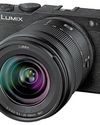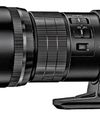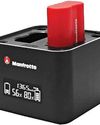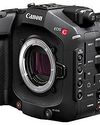
One important point you should bear in mind is that all OEMs have opted to use new lens mounts for their MILCs. While this results in incompatibility with the older D-SLR lenses (even from the same manufacturer), there are compelling technical reasons to justify this move.
Let us see in detail the reason behind this issue and how we can overcome it. Picture 1 (a schematic, not to scale) shows how the MLCs have relatively thinner bodies as they lack the reflex mirror that is present in the D-SLRs. Hence, the distance between the flange (Picture 2) which is where you mount the lens, and the sensor, called the Flange Back Distance (also known as Flange Focal Distance) is shorter.
In Picture 1, this is indicated by a red arrow for the MLC and a blue arrow for the D-SLR. In Picture 1 the flanges of both are aligned (the green dotted line) and you can see how the sensor of the D-SLR is positioned more to the back compared to that of an MILC.
A direct consequence is that a lens designed to work with a D-SLR will not focus correctly on an MILC even if you were able to mount it though this is technically not possible since mounts will be different. The lens will focus on a plane beyond (or to the back of the) sensor (Picture 3). This is a major barrier to those photographers who want to shift to MILCs as the investment in the D-SLRs lenses, which can be considerable, will go as a waste. Manufacturers have recognized this problem and have developed a solution, which is a device called an adapter. Let us look at how an adapter works.
この記事は Smart Photography の September 2022 版に掲載されています。
7 日間の Magzter GOLD 無料トライアルを開始して、何千もの厳選されたプレミアム ストーリー、9,000 以上の雑誌や新聞にアクセスしてください。
すでに購読者です ? サインイン
この記事は Smart Photography の September 2022 版に掲載されています。
7 日間の Magzter GOLD 無料トライアルを開始して、何千もの厳選されたプレミアム ストーリー、9,000 以上の雑誌や新聞にアクセスしてください。
すでに購読者です? サインイン

SELECTING THE RIGHT SYSTEM
Buying a new mirrorless camera can be a daunting decision. Not only are cameras very expensive, but also choosing a brand with an exclusive mount can mean locking yourself into a system.

Capturing Momenta Folding Boundaries
With the Pixel 9 Pro Fold, Google takes cues from its impressive line-up of Pixel smartphones and resolves some of the design oddities we’ve seen on foldable smartphones from more seasoned competitors in the category.

Super Sharp
Smart Photography reviewed the OM System OM 1 Mark II camera last month. If you haven’t read the review, please do so.

HIDDEN FEATURES OF YOUR CAMERA
Ashok Kandimalla has been in the photographic field for over three decades and has extensive experience in both film and digital photography.

Hahnemühle Hemp Paper at Olympics & Paralympics 2024
As the 2024 Paris Olympics and Paralympics embraced sustainability, Hahnemühle’s Digital FineArt Hemp paper played a central role as the exclusive medium for the official Premium Posters. This eco-friendly, plant-based paper aligned with the Games’ commitment to sustainability and delivered exceptional print quality. From limited-edition posters to the Artistic Posters Programme, Hahnemühle’s innovative use of hemp fibres showcased how high-value print products continue to thrive in a rapidly digitizing world.

The Lasting Power of Print: Preserving Memories Through Photobooks
I am a software engineer turned photographer, and my journey in photography has been a constant companion throughout my life.

The Wildlife of Eastern Mongolian Steppe
Mohit Ghatak is an engineer and a management postgraduate and works as a regional business leader in Singapore.

Abhishek Dey's Photo World
I identify myself more as a travel photographer than a purely landscape photographer.

Manfrotto lithium ion batteries for cameras
Manfrotto has introduced its new MKII lithium-ion batteries, featuring a higher capacity of 2400mAh for Nikon, Sony, Canon, Fuji, and OM System cameras.

Canon to have EOS C80 with enhanced features
Canon announced the launch of its latest Cinema EOS camera, the EOS C80, just ahead of the International Broadcasting Convention (IBC) 2024.